The devastation from the October 1871 fires is incomprehensible by modern standards. We live in exceptionally mild times.
Disrupting the Borg is expensive and time consuming!
Google Search
-
Recent Posts
- Fact Checking NASA
- Fact Checking Grok
- Fact Checking The New York Times
- New Visitech Features
- Ice-Free Arctic By 2014
- Debt-Free US Treasury Forecast
- Analyzing Big City Crime (Part 2)
- Analyzing Big City Crime
- UK Migration Caused By Global Warming
- Climate Attribution In Greece
- “Brown: ’50 days to save world'”
- The Catastrophic Influence of Bovine Methane Emissions on Extraterrestrial Climate Patterns
- Posting On X
- Seventeen Years Of Fun
- The Importance Of Good Tools
- Temperature Shifts At Blue Hill, MA
- CO2²
- Time Of Observation Bias
- Climate Scamming For Profit
- Climate Scamming For Profit
- Back To The Future
- “records going back to 1961”
- Analyzing Rainfall At Asheville
- Historical Weather Analysis With Visitech
- “American Summers Are Starting to Feel Like Winter”
Recent Comments
- Bob G on Fact Checking NASA
- Bob G on Fact Checking NASA
- Ohio Cyclist on Fact Checking NASA
- Bob G on Fact Checking NASA
- Bob G on Fact Checking NASA
- Bob G on Fact Checking NASA
- Bob G on Fact Checking NASA
- arn on Fact Checking NASA
- Gordon Vigurs on Fact Checking NASA
- Bob G on Fact Checking NASA

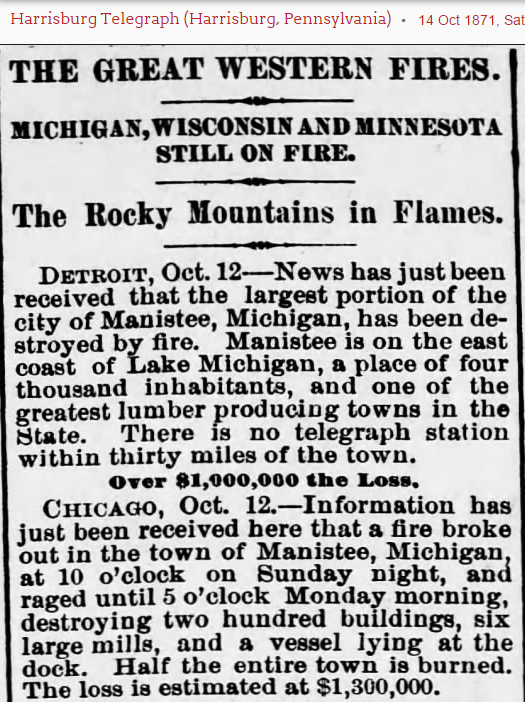
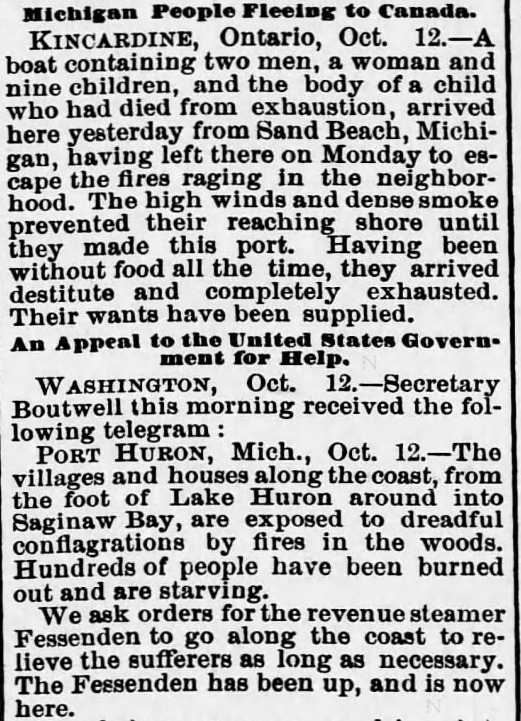
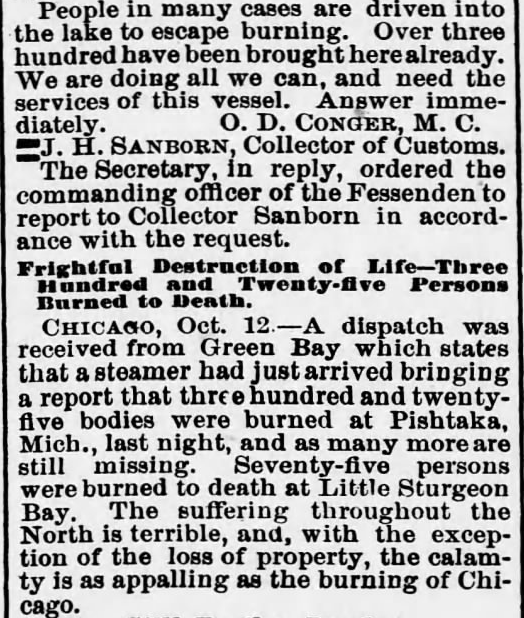


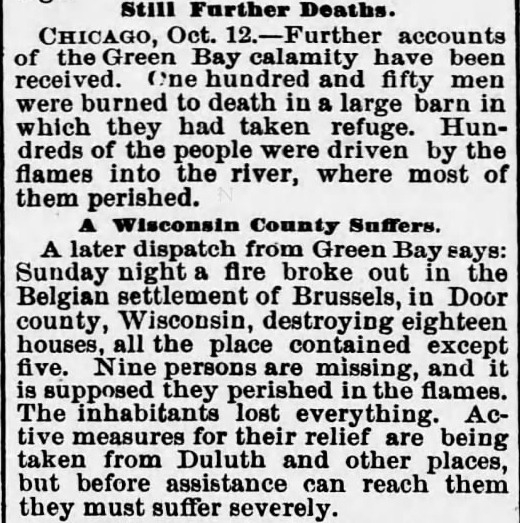
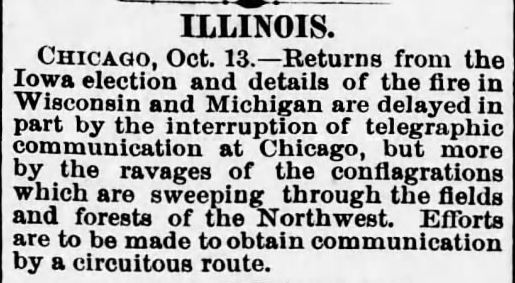

BTW a “Revenue cutter” would be from the US Revenue Service which was one of several services which were predecessors of the US Coast Guard. The US Coast Guard was formed by combining the Revenue Cutter Service, Light House Service, Life Saving Service, Steam boat Inspection Service, and the Bureau of Navigation which at one time were all separate services.
It’s hard to find more thrilling history than some of the very hazardous missions the US Life Saving Service performed during it’s history. Some of the situations and conditions they rowed into were purely suicidal.
“US Life Saving Service”
Wow! Sounds like there might be a movie plot or two in there…
There is one piece of true nautical history that’s never been put on film that should have been long ago. Even the fictional tale of ‘ Master and Commander’ could not come close to this real life swashbuckling tale concerning the Frigate USS Essex during the war of 1812. Now that is a tale that should have been immortalized by Hollywood long ago and probably would have been had the ending been up to Hollywood standards.
The tale would start out with the fact that the that warship (and several others) was commissioned and built and fitted out using funds voluntarily donated by private citizens and not from the public treasury and was done so with the intent from the beginning that the ship would be given to the US Navy and not used as a Privateer. Thus the name USS Essex since the funds for the ship came primarily Essex county Massachusetts. It gets better from there.
Thanks for the heads up! Sounds good! I will check that out. 🙂
Tony had indulged me before so perhaps he will this time for going OT:
Here is my own abridged version of the tale that I wrote years ago. First a link to a model of the ship so you know what it looked like. http://www.stephensandkenau.com/ship/uss-essex/
The first USS Essex was a launched from the yards of Salem, MA in 1799 as a 32 gun Frigate. Though launched about the same time as the USS Constitution, she was not a “super frigate” as that ship was. Her construction was more conventional than the larger Frigates like the Constitution and Constellation. She was one of the ten “subscription ships” who’s construction was funded directly by donations from American citizens and not from funds taken from the governments treasury.
And yet this standard American Frigate would go on to compile an illustrious record. She was the first US Navy ship to enter an ocean other than the Atlantic when she rounded the Cape of Good Hope into the Indian Ocean. And on Feb 14th 1813 she become the first US Navy ship to round the Horn of South America and pass into the Pacific Ocean where she would prey on the British Whaling fleet.
The Essex was intended by her designer to be armed with 26 long guns on the gun deck and 16 lighter carronades on the spar deck above. But in 1810 her commander of the time had ordered that most of the long guns be removed and replaced by lighter carronades on the gun deck. This made the ship much lighter and faster but made it far less stable when the ship was under full sail. It also put the ship at a great disadvantage in a longer range engagement since the carronades were made for close in short range battle.
The current Captain, David Porter, had requested that the carronades be replaced by the more suitable long guns on the gun deck before he went to sea but there were none available. And so he and his crew would have to deal with the danger of sailing a ship that could become unstable if too much sail was caught by higher than expected winds while the ship was maneuvering.
David Porter was a Captain of exceptional qualities and known for his aggressive nature. Earlier, before the war, Porter had been in command of the US Navy Schooner USS Enterprise. While in port in Malta at a time when tensions were running high between the US and Great Britain. Porter claimed a British sailor had insulted him. He had the sailor dragged onto the Enterprise and flogged. The captains of the several British war ships in port were incensed and threatened to fire upon the Enterprise if it left the port before the matter was settled by the Governor of Malta. Porter sailed anyway there by establishing the important precedent which still stands today that no US Warship will submit to local authority while in a foreign port.
Porter’s family name is found in annuals of US Navy history from the beginning and his son would become the second man to hold the rank of Admiral in the US Navy. On board the Essex with Porter is a young midshipman who Porter has raised as his own at the behest of the boys father. George Farragut and David Porter’s father were friends and when George Farragut found himself a widower with five children David Porter offered to take his nine year old son and raise him as an officer and a gentleman. And so David Glasgow Farragut is a midshipman aboard the Essex. David would become the first man to hold the rank of Admiral in the US Navy. And even at this time early in his naval career David is bold and brave with a strong command presence. He is intelligent with wisdom and sea faring knowledge beyond his years. If the names Porter and Farragut seem familiar, they should be since they were covered in glory during the US Civil war.
Porter had drilled his crew to perfection. They were as well trained in sailing, gunnery, and the techniques of boarding and hand to hand combat and swordsmen as any ship afloat. Weekly the men’s personal arms were inspected. Each man was armed with a cutlass that must be sharp of as a razor, a dirk made by the ships armorer from a file, and a pistol.
Porter on the Essex had already seen much service during the war. Sailing from New York shortly after the war began the Essex took two British troops ships captive right under the nose of their escorting frigate HMS Minerva. In the next two weeks the Essex took another six British merchant ships as prizes in the waters north of Bermuda. Then on August 13th, using deception to make his frigate look like a merchantman, Porter lured the British 16 gun sloop Alert into a trap and took the ship in a battle lasting only 8 minutes. By the end of the year the Essex had taken 11 British ships as prizes. More than any other US Navy ship took that year.
December of 1812 was spent having the Essex overhauled and prepared for extended duty at sea. Sailing in January off the coast of Brazil Porter could not find the USS Constitution he was supposed to join up with. As you may remember the USS Constitution had a battle with the HMS Java during this time and so was not found at any of the prearranged places where a rendezvous between the Essex and the Constitution could been made. And so Porter, following the contingencies in his orders, took the Essex around the horn into the Pacific to wreak havoc on the British Whaling fleet.
Despite taking the longer and generally calmer but much colder route outside of the straights of Magellan, the Essex was pounded by rolling breakers that battered in the gun ports and caused the ship to take on a considerable amount of water. The vessel fought strong headwinds for the whole passage and did not round the horn into the calmer waters of the Pacific until about March 4th. Porter and his crew were exhausted by the passage and the ship required attention.
On March 14th Porter sailed the Essex into the harbor of Valparaiso,Chile. She remained there for two weeks being repaired and re-provisioned and the crew was allowed liberty before she headed out to sea to make war.
Chile was a Spanish Colony in open revolt but it’s independence had not yet been secured and so the Americans were welcome in Valparaiso despite the fact that Spain was allied with Britain against Napoleon. But though Spain was not at war with America and thus Chile was technically a neutral port, the Spanish authorities were not happy with the unprecedented visit. And so there was much political intrigue involved in Essex getting what she needed for her repairs and provisions. But successfully accomplished the Essex sailed on March 23rd towards the Galapagos Islands which the British whalers used as a rest and refit area between their forays into the Pacific looking for their prey.
Porter had the painted line around the ships hull which on US ships of the time was always white painted to the appropriate color some other navy used for their line. He would use deception every chance he could to get close to the British whalers at times posing as a British ship of war and at other times posing as a Spanish ship of war in order to take them with as little trouble and damage as possible. Time and again he invited the captains of British Whalers aboard and then informed them of their capture.
Over the next 5 months Essex took as prize 12 British whalers and recaptured an American whaler taken by a Peruvian Privateer. Porter fitted out some of these vessels as auxiliary war ships consolidating the guns from other captured ships onto the best of the captured ships so that he commanded his own small fleet. His problems were giving these vessels adequate crews and the disposition of the enemy crews captured. Some of the crews of these vessels were Americans that had been impressed into service by the British and their ships and these men were more than happy to serve under their own flag and do the British what they had done to them.
When word reached Britain that an American war ship was doing great damage to their whaling fleet in the Pacific it caused great anxiety. Washington Irving, a Brit that had been a friend of Porters in the prewar years wrote:
“It occasioned great uneasiness in Great Britain. The merchants who had any property afloat in this quarter trembled with apprehension for it’s fate; the underwriters groaned at the catalog of captures, while the pride of the nation was sorely incensed at beholding a single frigate lording it over the Pacific, in saucy defiance of their thousand ships.”
A newspaper in British Canada noted that the Essex “had annihilated our commerce in the South Seas” and harmed the empire more “than all the rest of the American Navy”.
One member of Parliament in England wrote” London “burnt dark for a year” referring to the lack of whale oil for English lamps.
The Brits had more worries about the exploits of the Essex than just their whaling fleet. At this time the US and Britain were contending over the possession of the Northwest territories of Washington and Oregon. Each country claimed possession of the rights to these lands and a US warship wreaking havoc in the Pacific combined with an increasing American presence ever since the Lewis and Clark expedition did not bode well for Britain’s ultimate possession of these rich territories.
And so in March 13th about the time that the Essex was in Valparaiso, the British Admiralty had dispatched the fur trading vessel Issac Todd escorted by the 36 gun frigate HMS Phoebe from England to round the horn and got the NW territories to drive the American traders off and claim dominance.
Phoebe was commanded by an experienced captain named James Hillyar. Hillyar had been promoted to his rank by Admiral Lord Nelson himself for his actions in battle.
Upon arriving at Rio de Janeiro in May of 1813 the local commander of the British South American station changed Hillyar’s orders, reinforced his squadron with tow smaller warships and sent him off after the Essex.
The reinforcement of more warships to Hillyar’s squadron was a direct result of an order from the British Admiralty that no British frigate would engage a US frigate alone in “single ship combat”. The order resulted from the multiple victories of USS Constitution and USS Constellation super frigates over British frigates that had tried to take them on alone. The most recent example of which was the USS Constitutions victory of the HMS Java off the coast of Brazil.
Because of the shortage of officers to command the many prize ships his fleet of six ships were now taking, Porter had to put the 13 y/o midshipman David Farragut in command of the recaptured American Whaler Barclay. The Barclay was part of a small fleet of captured vessels being taken to the port in Valparaiso where it was intended that the ships be sold to the Chileans. Farragut was to be “assisted” by it’s reluctant former captain. The former captain soon threatened to seize the vessel but the young Farragut successfully faced the much older man down. But the mission was not a success because the Chileans were using all their resources in their revolt against Spain.
Meanwhile, Porter relieved of some of the captured sailors and captains sailed to the Galapagos once more and took four more British whalers as prizes.
However while in Valparaiso, Farragut and the other captains received word of the British squadron en route to the Pacific and one ship sailed north and found Porter to warn him.
The Essex had now been at sea for a year and needed extensive repairs. The ship and the other former whalers in Porters fleet all needed work and especially needed the ships rid of the rats and other vermin that now were threatening to overwhelm the ships.
It was decided to sail west 2,500 miles to the Marquesas Islands to rest and refit his ships and rid them of the vermin. Then rested and ready Porter would seek out the Phoebe for battle.
As Porter sailed west the Hillyar’s squadron reached the Pacific minus the Fur trading vessel Isaac Todd which was lost with her whole crew to the stormy seas off the Horn.
Hillyar sent his smallest ship the HMS Raccoon up to the Northwest territories to enforce the British claim to those territories and searched for the Essex with the Phoebe and Cherub.
Porter with his five former whalers arrived in the Marquesas late in October of 1813. The set up a little community complete with dwellings, a bakery, sick house, coopers shop and even a small fort.
Communication with the natives was facilitated through an Englishman who had lived among the natives for years.
Once settled in the men began working on the ships. To get rid of the vermin they sealed of each chamber of the ship and left a charcoal fire burning in it to asphyxiate the rats and other vermin with carbon monoxide. The fumigation worked and on the Essex alone Porter estimated that somewhere between 1,200 and 1,500 rat carcasses were disposed of.
The Essex was beached in shallow water with a sandy bottom and with the help of native labor the work to clean and repair her hull progressed. Repairs were made using materials taken from some of the many captured whalers.
Work on the ship ended each day at 4 PM and Porter allowed one-quarter of his crew to stay ashore each night until day break where they could enjoy the pleasures of the very compliant and attractive native women.
Porter himself enjoyed such pleasures with at least two different native women and wrote about it publicly in later years despite the fact that he was married. In fact when he published his Journal of a Cruise Made in the Pacific Ocean in 1815 his accounts of the carnal pleasures that were enjoyed by he and his crew while at the Marquesas were so vivid and detailed and pornographic in nature that they were scandalized by all reviewers in both the US and England. Later additions edited out a great deal of the steamy details, but Porter was not the editor.
Porter was honest about it and concerning the conduct of the native women later wrote “…….if there is a crime, the offense was ours, not theirs; they acted in compliance with the custom of their ancestors; we departed from the principles of virtue and morality which are so highly esteemed in civilization.”
December 1813 the repairs to the Essex neared completion. But as the time for departure came nearer many of his crewman and the English prisoners didn’t want to sail again. Who can blame them? Leaving an idyllic south seas island, with wonderful climate bountiful food and compliant women wanting only to serve your every desire for the rough, dangerous, and hard life aboard ship? So desertions abounded and Porter was forced to incarcerate the prisoners on the ship and confine the remaining crew on board until the time of sailing.
Porters crew, now nearly mutinous, forced him to decide to set sail on 13th December. As the Essex departed the ships band played “The Girl I Left Behind.”
Porter also left behind four of the prize ships with a Marine Lieutenant and Midshipman and twenty-two crewmen to establish a permanent US base on the islands. This base would allow a refuge for him to retreat to when in need of repairs which was more likely now that British war ships were looking for the Essex in the Pacific. This crew however got caught up in the local conflicts between the tribes and soon the survivors had to abandon their post.
The patient and persistent Hillyar had continued to search for Porter and Essex during this whole interlude despite having no word of the where abouts of their enemy. In October, Hillyar took his squadron to the port at Lima to await some word of the Essex.
On February 3, 1814 Porter put into the harbor at Valparaiso again. Four days later Hillyar arrived. Since Chile was still nominally Spanish and Spain was not at war with the US the port was by law a neutral one and so Hillyar and Porter were by law not allowed to combat while in the port.
Hillyar and Porter were acquainted with each other from the prewar days when they met while each was serving in the Mediterranean. They respected each other but now they were adversaries each serving his nation at time of war. Hillyar brought the Phoebe right up along side the anchored Essex close enough that the two captains could exchange shouted greetings.
Over the next several days with the British and American ships moored beside each other the crews exchanged shouted insults and challenges. The Americans and British also battled with song, The Americans changing the the lyrics of national tunes such as Yankee Doodle to insult these particular British sailors and the British returning the favor with a rendition of “Sweet Little Cherub that Sits Aloft”.
Over the next weeks Hillyar and Porter met at the home of the American Envoy at the port, Joel Poinsett to establish the rules by which their coming combat would be conducted and to resolve other matters in advance such as the treatment and release of prisoners.
Hillyar then kept the Phoebe and Cherub sailing off the entrance to the harbor to prevent the Essex from escaping. Porter waited in anchored in port. Hillyar waited sailing to seal of any escape.
Finally nature took it’s hand and decided when the combat would occur when a strong wind broke the Essex’s anchor cable and the wind blew her out of the harbor right towards the waiting Phoebe and Cherub. Porter tried to turn looming disaster to his advantage and put on maximum sail to try and out run the British ships which given the right circumstances the Essex could have done.
But the strong wind blew quickly into a powerful squall just as the Essex was rounding the outermost point of the harbor, The top main mast was ripped off, and the unstable Essex healed over almost completely on to her side throwing 4 sailors into the sea.
Porter with only a few long guns and a damaged mast and rigging that limited his ships speed and was at a distinct disadvantage. The Phoebe and Cherub pounded the Essex with their long guns. Porter had no choice. He put up all the sail he could and turned the Essex towards the enemy to try and get them in range for his cannonades to bear but the British avoided him. The combat was bloody and went on for hours but ended when the Essex had to strike her colors after an explosion in her magazine. Some of the crew jumped overboard and swam to shore.
A midshipman from the Phoebe that was among the first to board the surrendered ship described the scene:
“I was on the first boat the boarded her. Nothing was to be seen all over her decks but dead, wounded, and dying–we threw 63 overboard that were dead and there several wounded that it would have been a mercy to do the same to…….One poor fellow, who had his thigh shot off, managed to crawl to a port and tumble himself into the water which put and end to his misery. There were 44 amputations performed that night……….Captain Porter was in tears when he went on board the Phoebe to give up his sword and he told Captain Hillyar there were 15 of his brave fellows killed after she struck.” (Struck as in struck her colors signaling surrender).
There were 255 men aboard the Essex at the start of the battle. 58 were killed out right. 66 wounded with some of those to die. 33 were missing presumed drowned. 24 had abandoned ship and swam ashore. Phoebe lost only 4 killed and the Cherub only 1.
The young Farragut had rejoined the Essex before it sailed to the Marquesas and was aboard during the battle, unharmed and taken prisoner. Farragut had a pet pig he had named “Master Murphy” and the British tried to claim it as a prize from the ships property. . Farragut claimed it as his private property and thus not subject to confiscation. The matter was decided in a boxing match with a young man selected from Phoebe’s crew. Farragut quickly beat his opponent and retained his pet pig.
As was the practice of the day Porter and his surviving crew that had not swam ashore were paroled and allowed to sail away on the US whaler they had first retained with the formal promise they would not join in hostilities until properly exchanged for British prisoners that the US held.
However he was detained by the British war ship HMS Saturn outside of Sandy Hook, NJ. on July 7, 1814. Porter escaped after the British captain failed to honor the letter from Captain Hillyar and intended to imprison Porter. A few days later the British captain of the Saturn was ordered to release the rest of the American survivors from Porters crew but only did so after humiliating them.
During her adventures during the war of 1812 prior to her capture by the British the Essex did more damage to the British commerce than any other American ship.
President Theodore Roosevelt wrote in his own history of the war of 1812:
“By this year’s campaign in the Pacific, Captain Porter had saved all our ships in those waters, had not cost the government a dollar, living purely on the enemy, and had taken from him nearly 4,000 tons of shipping and 400 men, completely breaking up his whaling trade in the Pacific.
The cruise was something of a sui generis in modern warfare, recalling to mind the cruises of the English and Dutch navigators. An American ship was at a serious disadvantage in having no harbor of refuge away from home; while on almost every sea were British, French, and Spanish ports into which vessels of those nations could run for safety.
It was an unprecedented thing for a small frigate to cruise a year and a half in enemy waters; and to supply herself during the time purely through captured vessels with everything–cordage, sails, guns, anchors, provisions, and medicines, and even money to pay the officers and men!
Porter’s cruise was the very model of what such an expedition should be harassing the enemy most effectually at no cost whatever.”
It was through the exploits of ships like the Essex, Constitution, and so many others including the 150 American privateers that took at total of almost 450 British ships, and the failure of the British to subdue the upstart American nation that the US emerged from the war of 1812 was a world power that while not yet on par with the British, French, or Spanish empires, were a force that had to be reckoned with in world affairs.
A terrific tale, RAH
I have learned more American history from the commenters here at Tony’s than I ever learned in school.
In terms of extent, the worst fire on record was Idaho in 1910. There were also huge, catastrophic fires in Michigan during 1881 and New Brunswick in 1825. Far greater than anything in recent years.